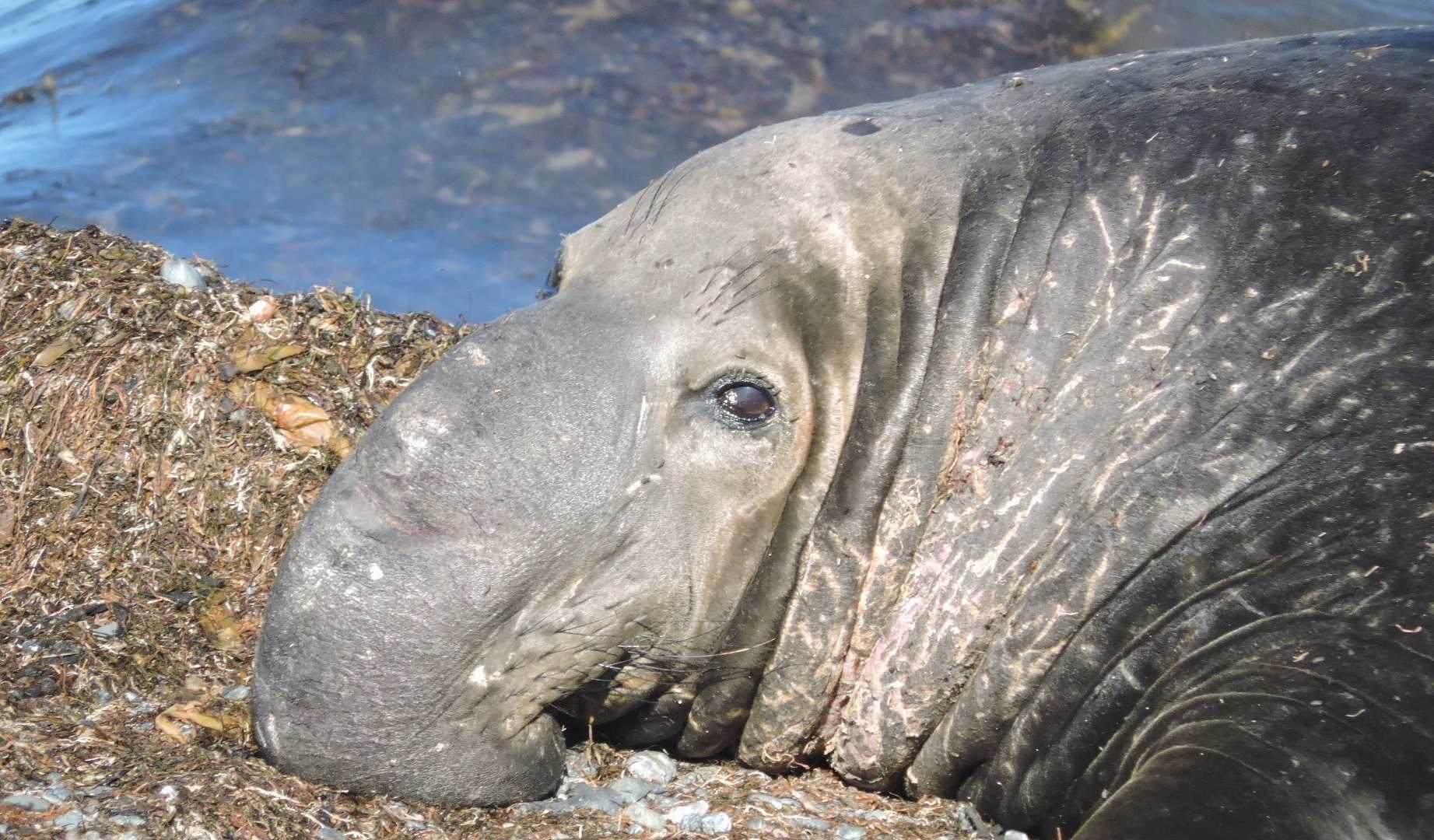We spent the morning at a remarkable island that has just recently become part of the Reserva de la Biosphere Vizcaíno. Before breakfast, some of the staff members made contact with a handful of fishermen who are working from the little community on the main island. They were happy to welcome us and act as guides to some of the sites and sights of the island. Soon, nearly all the guests were ashore by way of an easy landing on a shingle beach in front of the community and were on their way to the far side of the island to see some northern elephant seals hauled out on a couple of protected little beaches. Their story is very sad, but with a happy update. These giant pinnipeds (the males may reach five meters or 16 feet and a weight of more than two tons) were nearly extirpated in the late 19th century for their valuable oil. Like whales, they produce a thick layer of oil-rich, subcutaneous fat, or blubber, which was once a very valuable commodity. By 1892, just eight individuals were known to survive on Isla Guadalupe. Seven of these were promptly killed and it seemed the species was finished. Miraculously, 20 years later a group of about 100 animals was discovered on a hidden bay on this same island and the Mexican government gave them complete protection. From there, they soon spread back to Los Benitos and then on to several points on the Baja mainland, so that today their numbers have continued to increase and survival seems assured.
We are now in the breeding season for elephant seals, which lasts from December to February. One beach held a massive, scarred, beach master bull with a very impressive proboscis, and about a dozen much smaller females. Most of these females had already given birth, but one baby was born moments before we arrived, judging by the fact that about 50 western gulls were fighting over the discarded placenta nearby. Another small beach was populated by about 20 resting elephant seals of different ages and sizes, but no breeding was going on. This was made even more obvious by the fact that several males were gathered peacefully together.
The island itself is very interesting with rugged volcanic geology and a good covering of vegetation…much of it spiny. We also encountered our first jumping cholla cacti, as well as natural groves of agave plants. It was obvious that the region has received rain recently, because there as a profusion of flowers scattered about. Several of our guests went for a longer hike that paralleled the shoreline and gave them some great views of scenery and flora and fauna. Some opted for a Zodiac cruise, which gave different views of the rugged island and coastal marine life.
By mid-afternoon we had reached Isla Natividad and stopped to bring aboard Ramon Martinez to tell us about a very important fishery cooperative (Buzo y Pescadores de la California, B.C.S.) that is in place here to assure sustainable harvests of several target species, including abalone, lobsters, scallops, sea cucumbers, and conch shells. It is backed by scientific research and a combination of local aquaculture to produce abalone larvae for reintroductions and fishery take-limits … all of which have already shown success, especially in bringing back the abalones.
Hopefully, this system can now be followed in other regions. The islanders also hope to establish a tourist draw by offering SCUBA diving and surfing in the near future.









